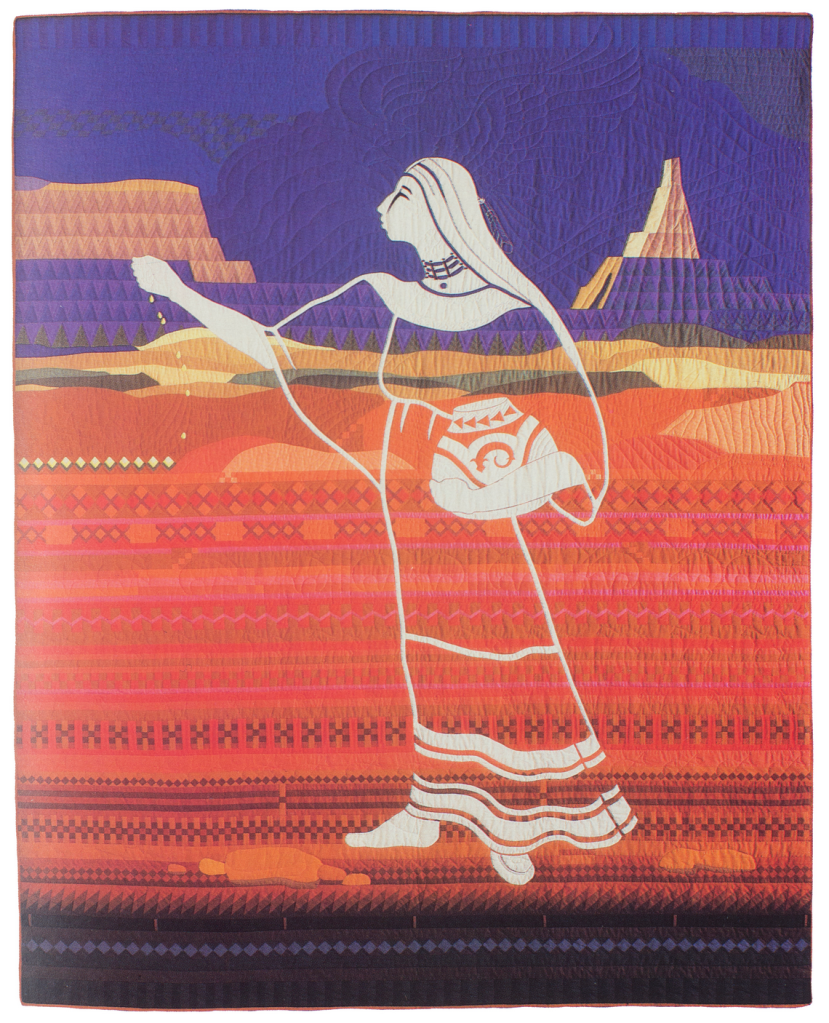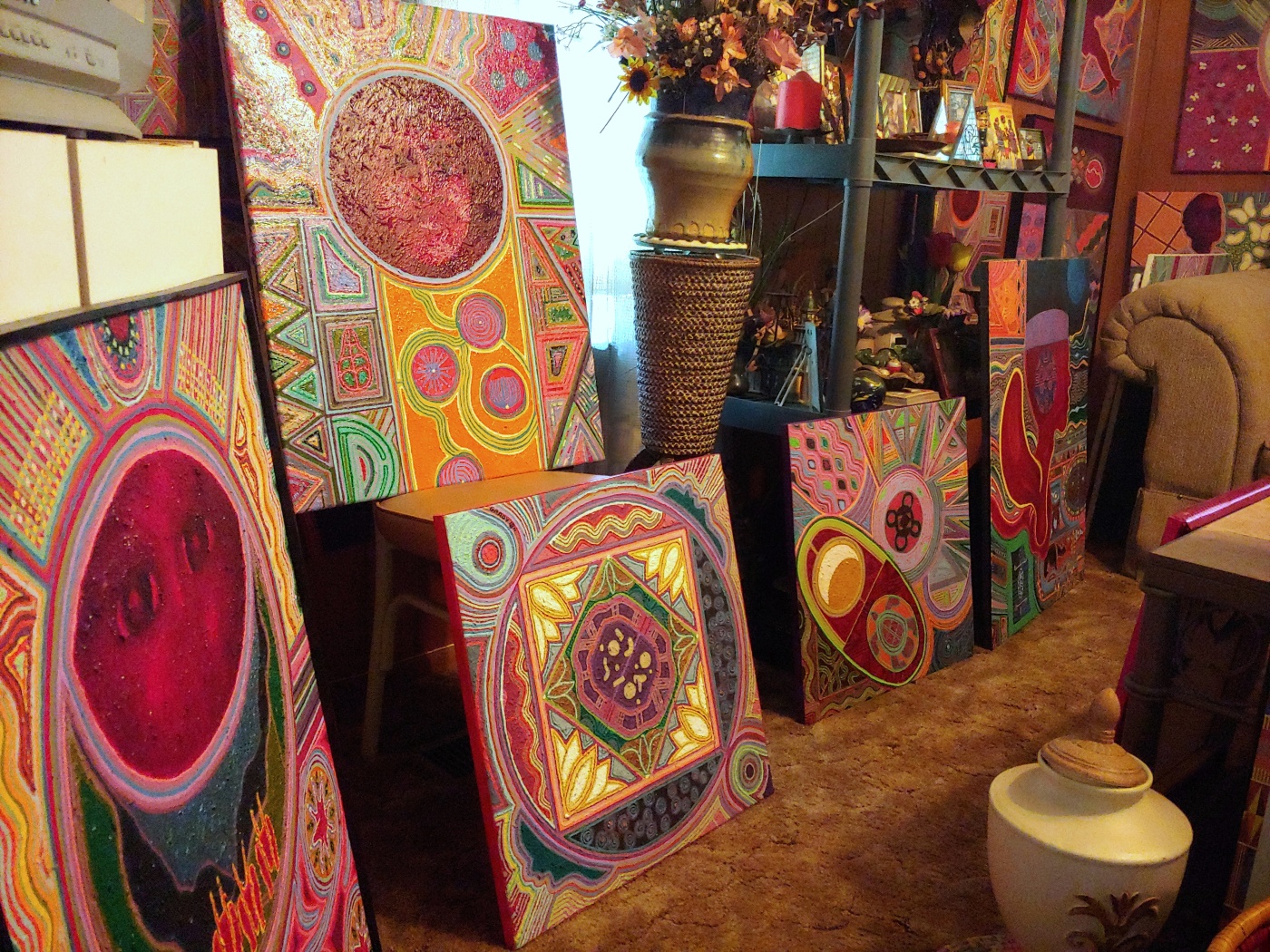In Fall 2020, students led by Associate Professor Louise Siddons created a digital project documenting the art exhibition history of Oklahoma State University, with the assistance of Digital Scholarship Librarian Megan Macken. Students used the digitized archive of the student newspaper, the Daily O’Collegian—today the O’Colly— to construct a database of exhibitions held between 1960 and 1999.
Here on the collection blog, we’re featuring reflective essays written by students about their work on this project, based on the research they did to compile the online exhibition history. This week’s essay is by Maddy Petrosky. It has been edited for length and clarity.
Overall, from 1985-1989 there was a plethora of exhibitions that incorporated many different themes and had broad topics. Some shared themes that I saw were Native American and African American representation. Many of the exhibitions that included Native American culture made sure to represent their history in a respectful and positive manner. For example, an exhibition of photos featuring Plains Indians, “Circles of the World,” had the purpose to show their rich heritage in a way that they often are not seen for. I learned that the Plains Indians were often perceived as combative and, according to graduate student Joan Thomas, this exhibition aimed to “show the people the diversity of the Plains Indians, and that they weren’t just war-like.”
An exhibition that displayed African American art in 1989 included paintings and sculptures representing African American culture. Black artists throughout Oklahoma and the United States showed work that represented their heritage. In the Daily O’Collegian’s coverage of the exhibition, it was stated by Edward Grady, an artist and research assistant at the Langston University library, that “African American art is the way some of the artists combine Africanism with their lives.”
Even though it seemed as though there was variety in the exhibitions throughout this time period, I think that there was a lot of subject-based consistencies when it came to the meanings behind the work and who was involved. I noticed a lot of exhibitions included heritage and cultural appreciation through the works displayed. It was interesting to see the students and staff involved in creating and organizing these exhibitions.
I believe that the O’Colly reacted in a critical but respectful way to the exhibitions they reported on. The articles reported facts about every show but also described the meanings behind the work and interviewed some of the participants about what they thought about the exhibitions and the meanings behind them. I noticed that they went into depth about some specific pieces and commented on their opinions and what others thought of them as well. They made the reader feel as though they had been there to experience the art work themselves. They were also critical when they felt necessary. Reviewing a Gardiner Gallery metals show in 1989, for example, writer Caroline Baker stated that “pieces vary from museum quality to garage sale quality,” going on to state that one metal fashion piece “looks sketchy and unfinished.” She is blunt about the pieces she has viewed and gives an honest opinion even if it is not desirable.

One exhibition that caught my attention was a quilt display at the Bartlett Center in 1989. This exhibition showed quilts in a new artistic way and not just as boring blankets. These quilts incorporated culturally significant designs. Some quilt work shown by Jan Lanahan ties into what the artists included in the African American Art Ancestry Awareness exhibit aimed to do by incorporating culture into their pieces. A piece by Lanahan titled “Earth Mother” used patchwork to “represent layers of earth and animals in ascending order of importance to the Indian.” This exhibition tied in cultural importance to be represented in a visual way for people to learn about while also enjoying the art. Many of the other quilts showed the history and struggles that the artists’ cultures faced in the past and other culturally significant representations.
Today, the Black Lives Matter movement seems relevant to these exhibitions. This current movement has not just been about protests it has also brought new awareness of systemic racism through art as well. Murals have been created all over the place, and African American artists have shown their struggles through their art. This connects to the exhibition I chose because for years people have been using art to convey the meaning behind their history and the struggles their cultures have faced. Current events today support and encourage the acceptance and appreciation towards all cultures. It is also important to educate people on the struggles people of different cultures have faced through history and learn from them.
An exhibition that I would propose that was missing from this decade would be an exhibition of only women’s art. I think this is an important exhibition idea because women’s art needs to be recognized and appreciated as a collective group. Even though there were some exhibitions in my time period that were geared towards women it was not a variety of types of art it was usually just one medium, and I think a new exhibition should incorporate all mediums to broadcast the talent women hold. Such an exhibition would respond meaningfully to the other exhibitions in this time period because they also represented inclusivity, showing the importance of celebrating race and heritage. I think that it is important to also include the issues of gender inequality and represent women’s skills.


Pingback: OSU Exhibition History: 1985-89, Lainey Gerber | Oklahoma State University Art Collection